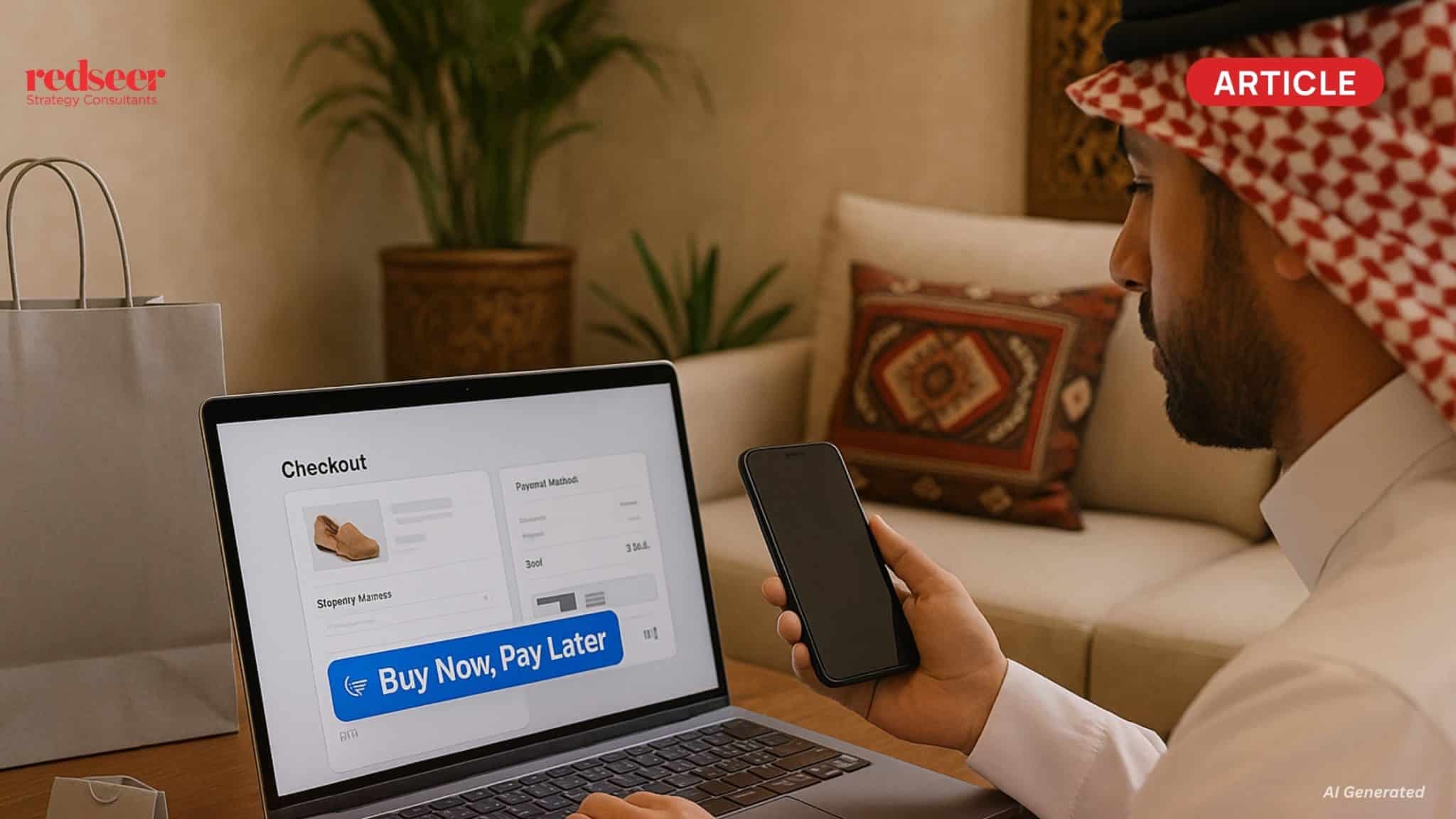
BNPL: A Key Growth Engine for Online Retail in KSA
When Buy Now, Pay Later (BNPL) first emerged in the GCC, it was closely tied to the growth of e-commerce. Over time, however, the BNPL model has expanded its footprint into offline retail, which has been driving more growth. Recent innovations like Tabby and Tamara cards, which make BNPL available across any Visa or Mastercard-accepting terminal, will serve as further growth impetus for offline channels.
But one aspect that continues to stand out, especially in Saudi Arabia, is how BNPL is quietly fuelling the growth of online retail. Here’s a closer look at this powerful dynamic.
1. Online Channels Still Dominate BNPL Transactions

We solve the strategy behind scale!
While BNPL has growth exponentially within offline retail in recent years and is increasingly accepted in physical stores and services, online channels still remain the core driver of GMV.
The origins of BNPL in the region were rooted in digital platforms, and this continues to be where the bulk of consumer transactions occur. Digitally savvy shoppers in KSA have adopted BNPL widely across categories like Fashion, Beauty & Personal Care (BPC), Electronics, and Home, and it’s now expanding into daily essentials, utility bill payments, and other everyday use cases.
This makes BNPL an essential tool for e-commerce platforms looking to boost conversion, basket size, and repeat purchases.
2.BNPL Now Powers Over 20% of Online Retail Payments in KSA

In 2024, BNPL platforms accounted for over 20% of total online retail transaction value in Saudi Arabia and this share continues to grow.
This is a significant milestone, especially as the online retail market in KSA becomes increasingly competitive. Global brands and regional marketplaces are doubling down on their Saudi presence, vying for a slice of this high-growth consumer market.
In this context, BNPL has emerged as a competitive differentiator, driving customer stickiness, improving checkout conversion rates, and encouraging higher spending.
Retailers should, however, weigh the margin impact: BNPL providers currently charge Merchant Discount Rates (MDRs) ranging between 4–6%. Still, for many, the trade-off is worthwhile given the revenue upside and customer retention benefits.
3. Tabby and Tamara Dominate With 95% Market Share

While there are seven BNPL license holders in Saudi Arabia as of 2024, the market remains highly concentrated.
Tabby and Tamara together command over 95% of BNPL transaction volumes in the Kingdom, making them the undisputed leaders. Their dominance is driven by strong product-market fit, deep merchant integrations, high customer satisfaction, and loyalty.
The combination of scale, brand trust, and seamless user experience has helped them entrench themselves with both retailers and consumers.
BNPL in KSA is more than just a payment trend. It is becoming a core infrastructure layer for digital commerce. As online retail continues to scale, BNPL will play an outsized role in driving growth, loyalty, and differentiated customer experiences.
Interested in diving deeper into the BNPL and e-commerce landscape in Saudi Arabia? Reach out to us for detailed insights and custom advice.

Written by
Akshay Jayaprakasan
Associate Partner
Akshay brings over a decade of experience across consulting and technology, with deep exposure to India, Southeast Asia and the Middle East. He has delivered multiple keynotes, served on industry panels, and is frequently quoted by leading Middle East media on the digital economy.
Talk to me
India’s Defence DeepTech Flywheel: The $6Bn Market Nobody’s Watching

Ready-to-Eat Brands Are Leaving 85% of Addressable Consumers on the Table

Who’s Winning in India’s Dating & Matrimony Market—and where are the opportunities for Platforms and Investors
